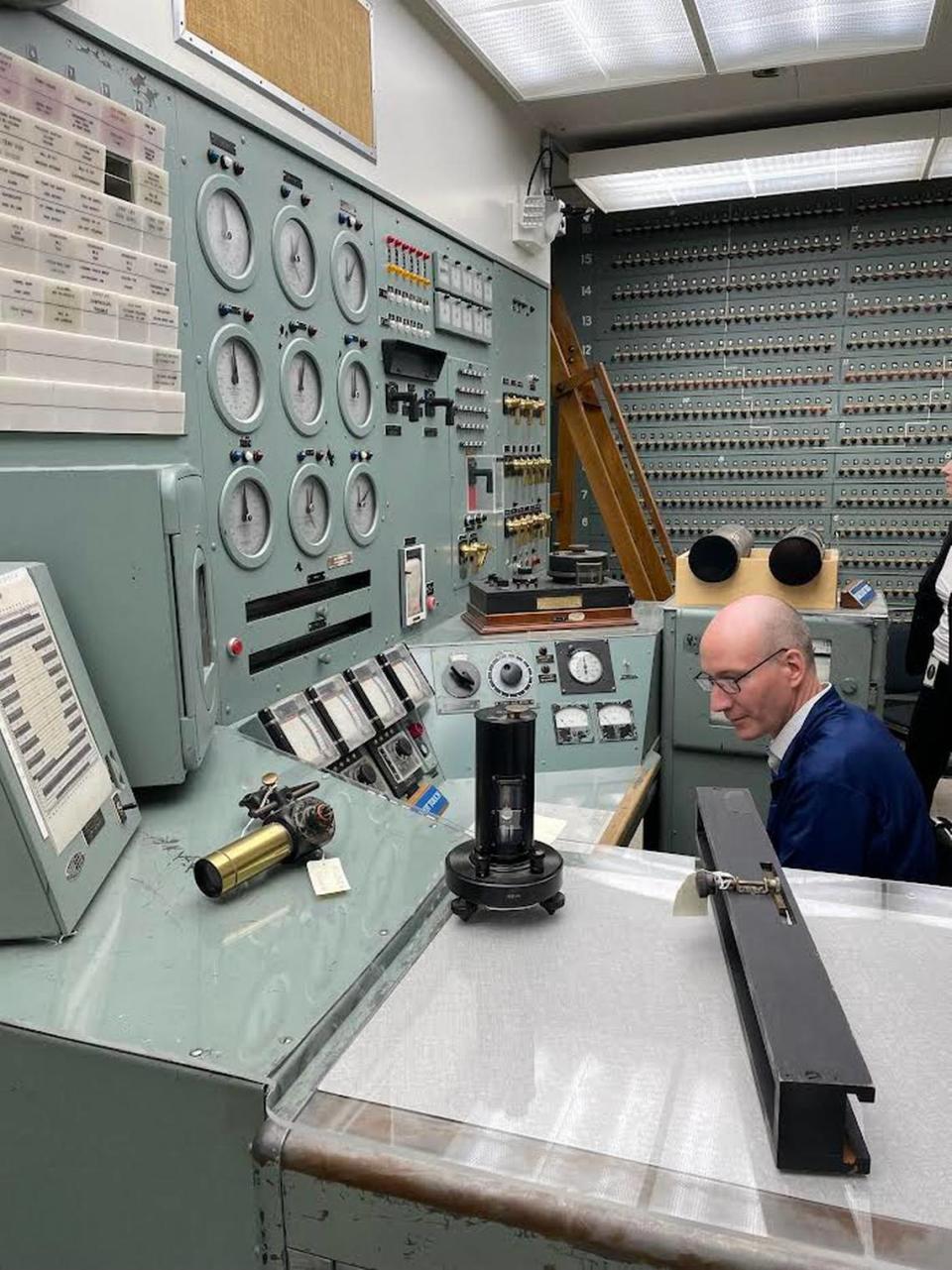Clean energy projects could cover 19K acres near Tri-Cities. Will they create enough jobs?
The deputy secretary for the Department of Energy pledged to work with the Tri-Cities communities as it makes a decision that will play a role in the long-term future economic development of the community.
In a visit to the Tri-Cities, David Turk pledged DOE would listen to proposals and “be genuine about what is beneficial to the community. We are a long-term neighbor to the community.”
The federal government is starting work toward picking projects to lease much of the limited land at the Hanford nuclear reservation that is designated for industrial use.
Most of the Hanford site in Eastern Washington is reserved under Hanford’s Comprehensive Land Use Plan for preservation and conservation.
Just 10% was set aside in Hanford’s Comprehensive Land Use Plan for industrial use.
Now, DOE is looking for organizations interested in leasing 19,000 acres, or about 30 square miles, designated for industrial use for clean energy generation and storage.
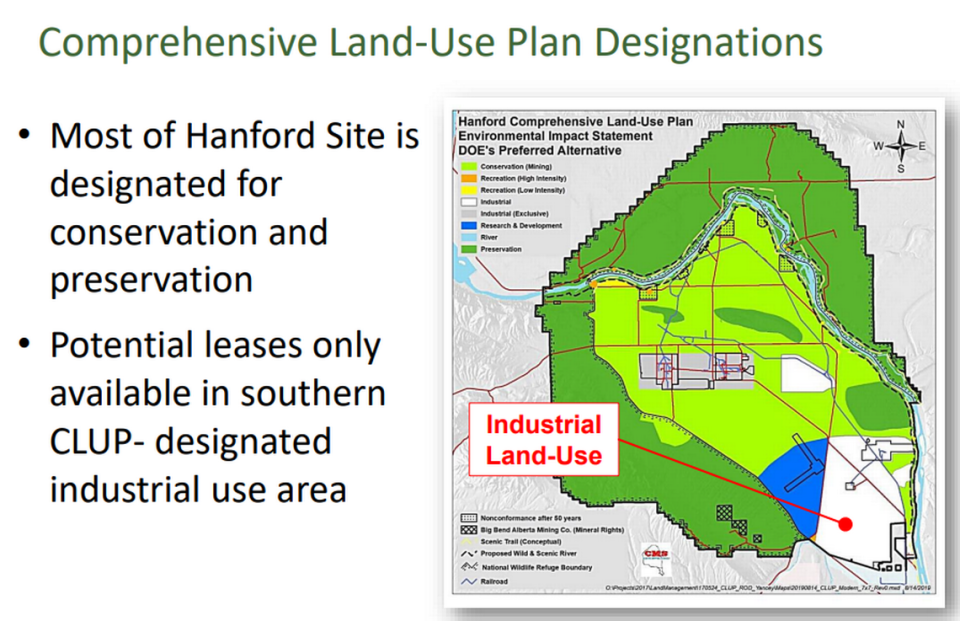
Acreage to be leased covers much of the largest area of land designated for industrial use at Hanford in the southeast corner of the site by Richland in Eastern Washington.
“There is only one way industrially that the Richland community can grow and that unfortunately is to the north,” said Diahann Howard, Port of Benton executive director at a DOE session to discuss its plans.
“So we need to ensure and ask that we have a strategic coordinated vision together with all parties to ensure we’ve got a balance of generation, new energy opportunities, as well as the industrial that we are going to need in and around it,” she said.
Potential uses include small modular reactors, solar, battery storage, bioenergy and clean hydrogen, according to DOE.
Wind would only be considered if new technology is used to prevent vibrations that would disrupt work to detect gravitational waves at the nearby LIGO gravitational wave observatory.
Clean energy developers would have to work around some existing development there, such as the Energy Northwest commercial nuclear power plant and a patrol training academy on land designated for industrial use, and avoid some small areas there that were used to dispose of radioactive waste.
Speeding up Hanford development
The federal government now controls 580 square miles of land adjacent to the Tri-Cities.
The Hanford site land was used during World War II for a secret project to produce plutonium, eventually using it for the Trinity Test bomb detonated in the New Mexico desert and then the bomb dropped on Nagasaki, Japan.
Farmers and orchardists, who owned about 11% of the land, and other early settlers and Native Americans there were forced from what was initially 670 square miles, some already in federal control.
The government continued to use the site to produce nearly two-thirds of the plutonium for the nation’s nuclear weapons program through the Cold War.
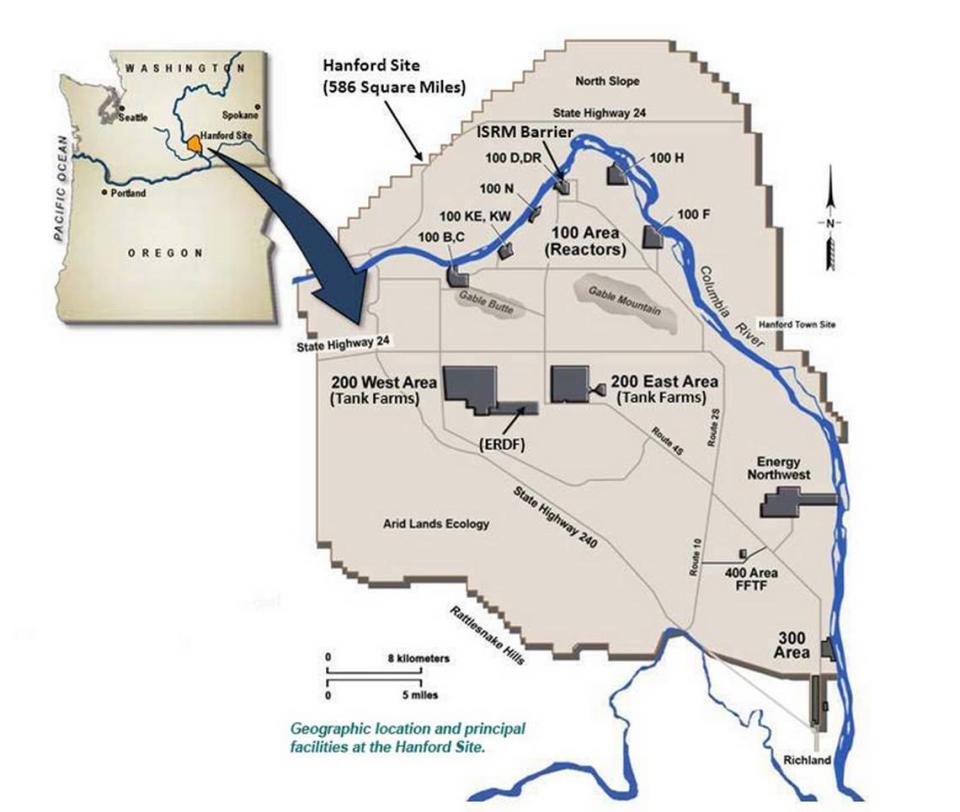
Now more than $2.5 billion is spent annually on environmental cleanup at the Hanford site, including disposing of radioactive and hazardous chemical waste. The work, which will not be completed for decades, employs about 12,000 in family-wage jobs.
The plan to use the large swath of industrial land for clean energy production is an opportunity to speed up industrial use of the land, said Ike White, senior adviser for the DOE Office of Environmental Management.
Both he and Turk pointed out that a clean energy park was a vision that came from the Tri-Cities community.
It is the right time for a Hanford land cleanup to clean energy vision to be realized, Turk said.
Ingrid Kolb, director of the DOE Office of Management, said DOE wants to make sure as much clean electricity as possible is being generated on the 19,000 acres.
DOE officials have been talking to officials at Edwards Air Force Base in California, where a 4,600-acre solar array has been installed, she said.
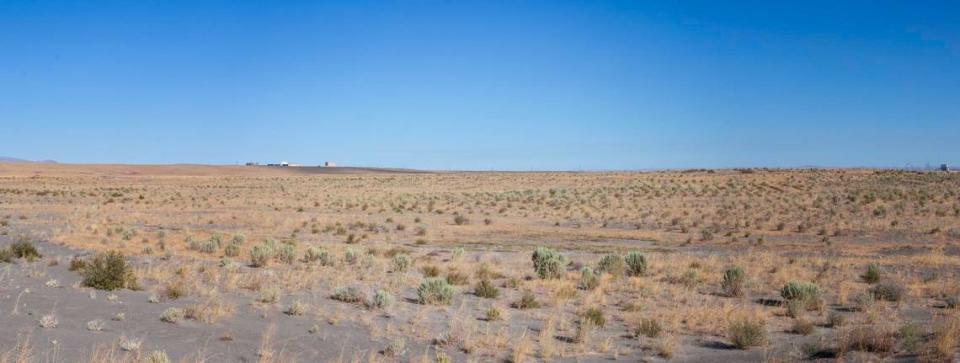
“A huge project would be amazing,” she said. Proposed generation projects must be at least 200 megawatts.
But Jeremiah Baumann, DOE chief of staff for the Office of the Undersecretary for Infrastructure, said DOE would like to maximize economic development for the Tri-Cities community and job creation.
“We just don’t want to get the cheapest electricity,” he said.
Who would use clean energy
David Reeploeg, vice president of the Tri-City Development Council and executive director of Hanford Communities, asked about a broader vision for the industrial land at Hanford with co-located new clean energy to decarbonize existing industry.
“We are eager for creativity,” Turk said. “We are not going into this with some set vision.”
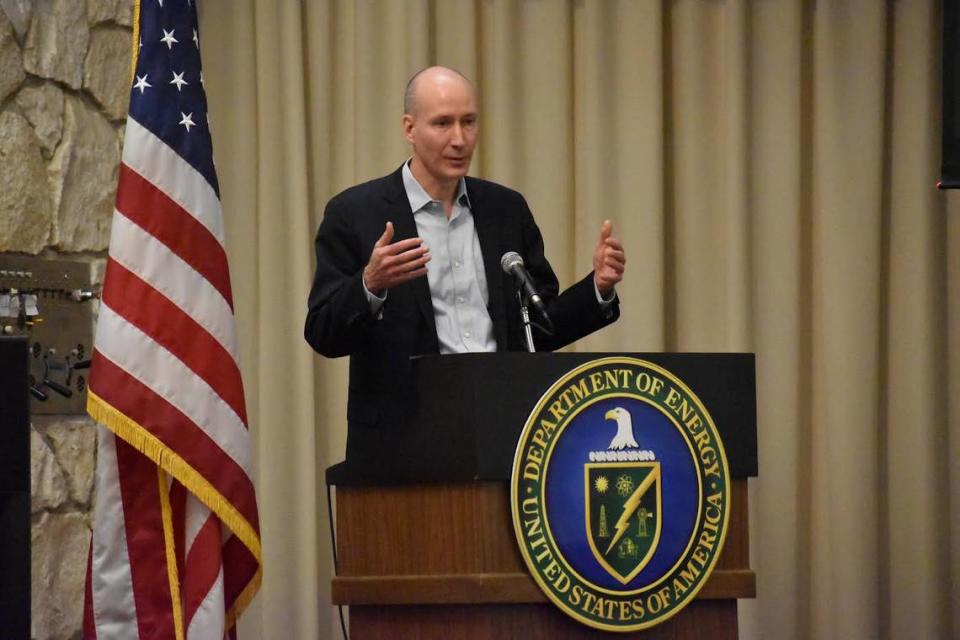
The build out of a large clean energy project should help develop a clean energy industrial base around the project, said Narayan Subramanian, adviser to the energy secretary.
DOE is trying to put the first step forward expanding a clean energy economy that could be used to eventually replace some cleanup jobs at Hanford by expanding clean energy generation, he said.
There was also discussion at the clean energy day between DOE and the Tri-Cities community about DOE projects purchasing the clean energy produced, whether for the Hanford site or for PNNL as their power needs increase and PNNL moves to eliminate fossil fuels and electrify as many of its facilities as possible.
Having a guaranteed purchaser has been suggested as a way to allow new technologies to be demonstrated as other wind and solar projects are proposed on other land in Benton County.
Turk said both good paying jobs and a clean energy transformation that has affordability, has security and has resilience are possible.
Economic development is a core responsibility, plus meeting tribal treaty obligations, of the communities in which DOE is a part, he said.
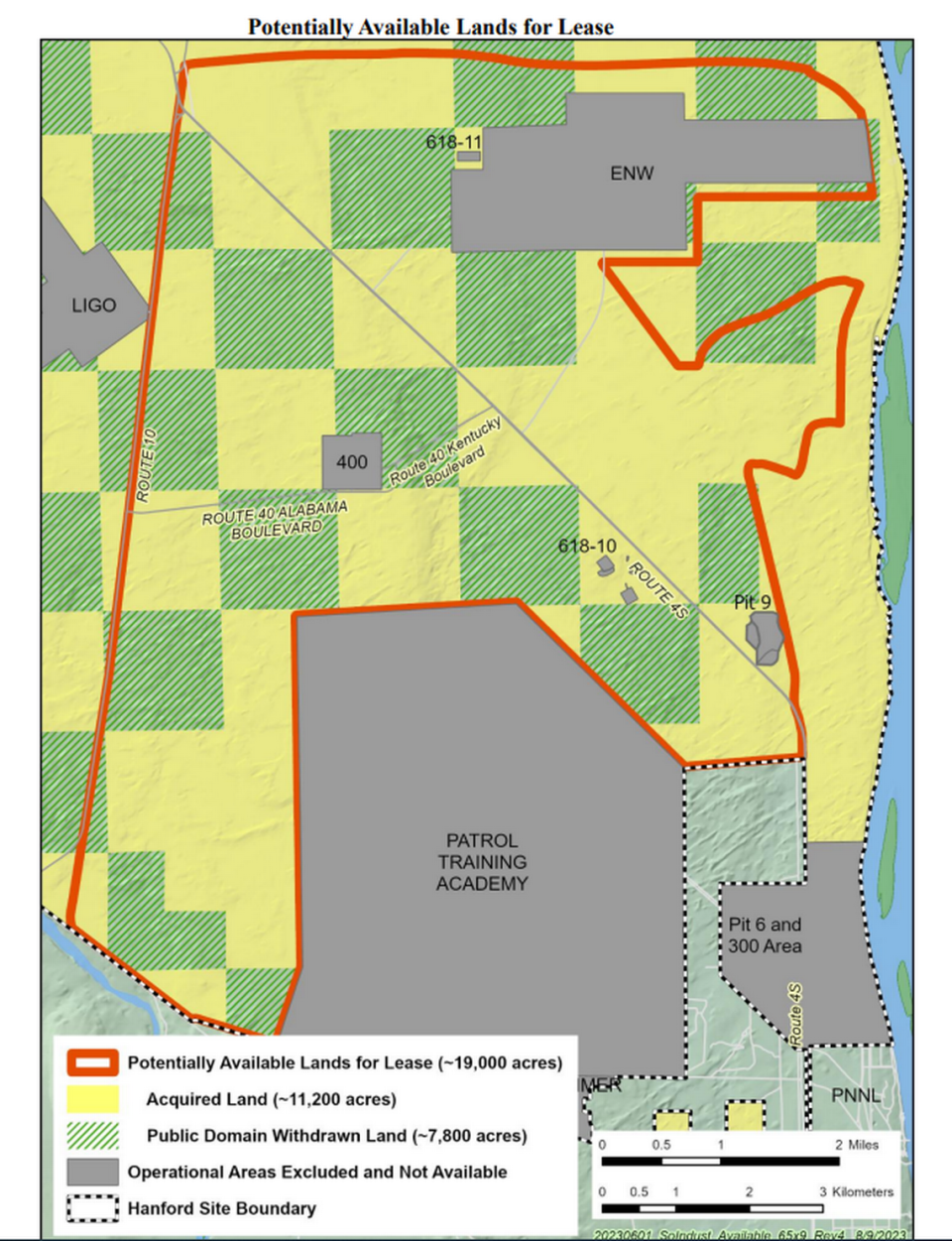
DOE has a special obligations to communities that have sacrificed for the nation to make sure the clean energy transition benefits those communities, he said.
No money for the conversion to clean energy projects would come from Hanford’s environmental cleanup budget, said DOE officials.
Regulatory reviews will be needed before any work begins on the land, including an environmental review that along with other reviews could take two to four years. Companies and organizations proposing projects potentially would be asked to pay for the review.
DOE is seeking feedback on its Cleanup to Clean Energy initiative at Hanford. Input should be sent to EMCleanEnergy@em.doe.gov by 4 p.m. Oct. 12.
“This is not us coming in with a full blown vision,” Turk said.
